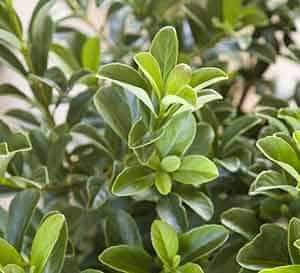Gardeners tend to focus on a fairly narrow list of wildflowers in attracting butterflies to the garden. But not all butterflies are attracted to butterfly weed and zinnia. Different species prefer different nectar sources. To attract a greater diversity of butterflies, you need to plant the foods they crave. The following plant-butterfly associations from Southern Living include several surprises alongside must-have butterfly favorites.
‘Real Glory’ Leucanthemum
Leucanthemums, also known as Shasta Daisies, earned their spot in gardens decades ago, and the Real Glory continues this tradition. Early each summer, it sends up stunning Gerber Daisy-like blooms with weeping white petals and frilly golden pom-pom centers, and then it reblooms into fall, extending the pollinator buffet longer than most Shasta Daisies do.
Salvias
There are too many magnificent salvias to highlight just one, and we love that they are pollinator-friendly but deer-resistant. Big-flowered varieties like the Saucy Red™ and Saucy Wine™ Salvias attract some of the most popular butterflies, including monarchs and Gulf fritillaries. The tidy blooms are visited by common sulphur and silver-spotted skipper. An assortment of swallowtails can also be found fluttering among salvia blossoms.
Ultra Violet™ Buddleia
True to their common name, butterfly bush, buddleias are pollinator magnets. From skippers and sulphurs to monarchs and swallowtails, Ultra Violet™ swarms with activity. A few showy visitors include zebra, eastern tailed blue, and painted lady butterflies.
Crazy Pink™ Echinacea
Another butterfly garden staple, coneflowers draw a big crowd in the summer garden. Diminutive beauties like olive hairstreak, pearl crescent, and common sulphur fly among giant swallowtails and other beauty queens. Diana, Gulf fritillary, and viceroy butterflies are among the common visitors.
Lantana
From the fiery red blooms of Red Little Lucky™ Lantana to the golden glow of Pot of Gold Lantana, this plant’s vibrant colors are a big draw for swallowtail butterflies, including giant, spicebush, and palamedes species. With large, yellow- and black-striped wings, the zebra butterfly is hard to miss dancing among the blooms. Dainty visitors include dwarf yellow sulphur, long-tailed skippers, and common checkered skippers. Also, watch for the intriguing ruddy daggerwing.
Abelias
Flowering over a long season, the fragrant blooms of abelia flutter with activity from mid-summer through fall. Red admiral butterflies, silver-spotted skippers, and swallowtail butterflies are commonly found hovering among the blooms!
Tecomas
Until recently, tecomas grew huge, bloomed only in spring and fall, and were often covered with unattractive seed pods. New breeding produced Lydia; Lydia stays more compact and blooms bright yellow flowers from early spring until frost, with less seed pods. While Bells of Fire will attract with its tropical vibe and flower power that reblooms with bright red bell-shaped flowers continuously until frost! Hummingbird and butterfly lovers alike will appreciate this shrub, as both winged friends are attracted to the tubular blooms.
Dark Blue Moody Blues™ Veronica
The spiky blooms of veronica provide nectar all season long. One of the most common butterflies found darting between plants is the gray hairstreak, a small species found throughout North America. Another visitor, the common sulphur, glows against the deep blue blooms with bright yellow wings. Also, watch for painted ladies and monarchs flitting among the blossoms.
Sugar Cookie™ Sweet Viburnum
Each spring, clusters of small white blooms cloak sweet viburnum with an intoxicating aroma, luring Baltimore checkerspot butterflies from far afield. These colorful butterflies are named for the orange and white patterning on deep black wings.
Sunbow® Azalea Series
The large flowers of Solar Glow™ and Solar Flare™ Azaleas lure key pollinators, including the showy great spangled fritillary and eastern tiger swallowtail. Other swallowtails, including palamedes, also frequent azalea.
Learn more about how to attract pollinators to your garden!

























